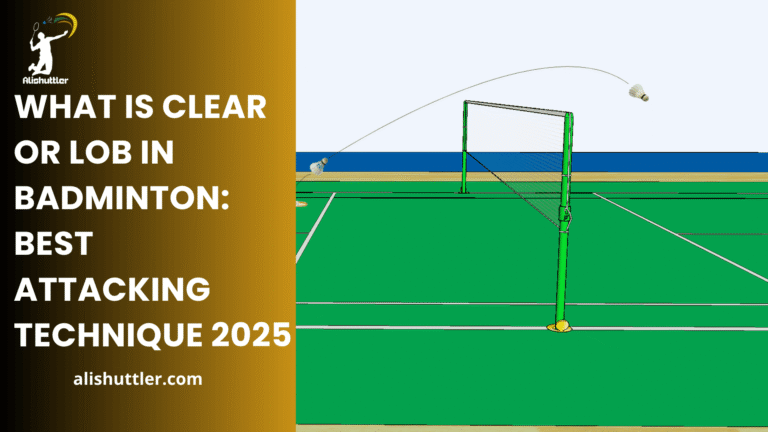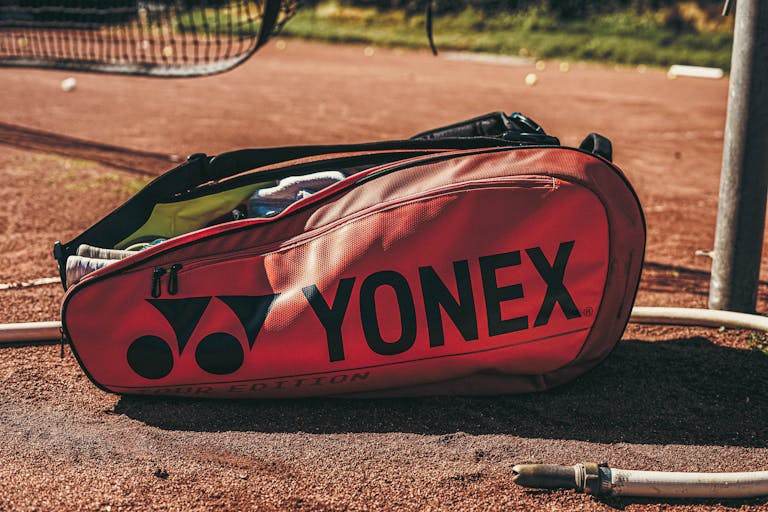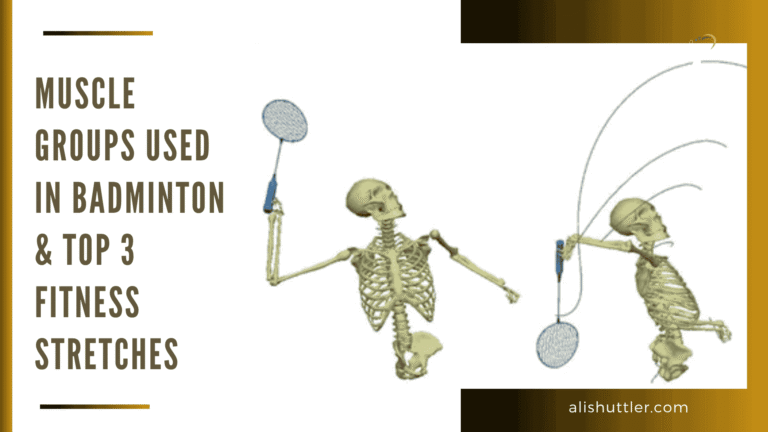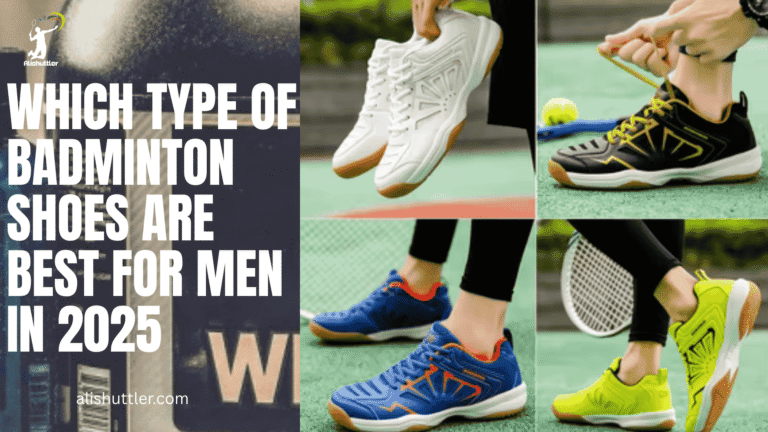Badminton Shoes Insole is an essential component of the shoe that provides additional comfort and support while playing. Quality insoles assist in relieving foot pain, reducing impact, and providing stability to feet during rapid movements.
Many players choose insoles with enhanced grip, lightweight, and breathability. Soft foam and gel types are the most common. For players who require additional comfort or want to prevent sliding, the appropriate insole can make a difference.
The Unsung Hero

Insoles, the unsung hero of badminton shoes. Though string and grip receive more coverage—string was the second unsung hero and grip the third—insoles silently define comfort, stability and performance. The proper insole can protect your foot health, decrease fatigue, and increase agility.
For us, discovering the right insole is as crucial as selecting the ideal racket or grip, considering the amount of time players are on their feet during matches.
1. Shock Absorption
Badminton is packed with jumps, lunges and quick stops. The pounding on feet and joints can accumulate quickly. Insoles with shock-absorbing tech—such as gel pads or high-resilience foam—cushion every landing and step.
This translates to less stress transfers to your knees and hips, key moments during long rallies or abrupt tempo changes. Quality padding can be the distinction between an effortless game and heading home with aching feet.
Some insoles concentrate on the heel, others dissipate their shocks across the entire foot, allowing players to select the preference that fits their play style.
2. Foot Stability
Stability is what counts when you’re going side to side or taking abrupt turns. Insoles with firm arch support hold the foot stable, preventing it from rocking or twisting in the shoe.
With the right insole, you’re more balanced and controlled on the court, so every shot counts a little more. A grippy insole that holds to the shoe lining staves off foot slide, reducing blisters or slips.
Proper foot alignment from a supportive insole means better posture and less injuries down the road.
3. Injury Prevention
All that pounding puts stress on feet, so injuries such as plantar fasciitis, heel spurs and shin splints are common. Supportive insoles assist by distributing pressure and providing the arch and heel the padding they require.
Even players with flat feet or high arches find relief with the right insert, because it fills the voids and allows the foot to move as intended. Putting the right insole on is an easy piece of a larger strategy to remain injury-free, the same way you get a grip that fits your hand.
4. Fatigue Reduction
Long matches cause foot fatigue. Soft, springy insoles buffer the jolt and keep you light on your toes, no matter where your feet are carrying you. Stress gets distributed, not just piled on a single area.
This has you cruising further with less sore arches or tired legs. With less pounding, you conserve energy. Little things in insole design that keep you moving – fast, even on your last set.
5. Agility Boost
Fast pivots score, too. Skin-thin, feather-light insoles help keep shoes from feeling bulky. Responsive materials rebound quickly, allowing you to push off for jumps or pivots.
Good insoles allow your feet to flow free, not pinned in place. Every maneuver comes across as snappy.
Insole Anatomy
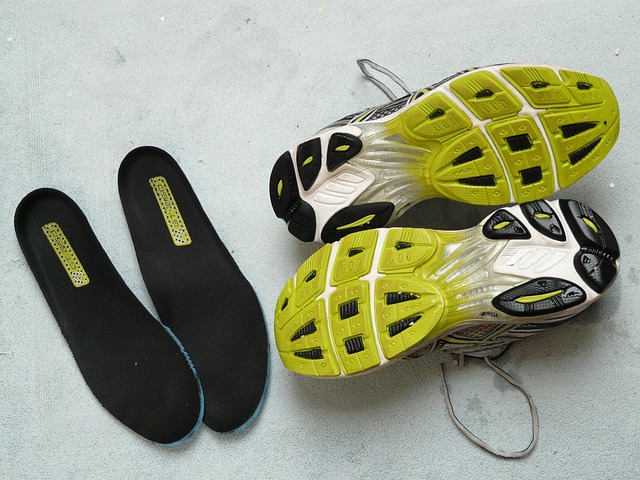
Badminton shoe insoles have more than padding on layers. There is purpose in every piece — collaborating to propel motion, cushion impact, and accommodate various foot profiles. Understanding what constitutes a quality insole will assist you in locating the right fit for PERFORMANCE and COMFORT.
Insoles, of course, come in various materials, shapes and features, and wear out with use.
Arch Support
Arch support does wonders for foot alignment on the court. Insoles with firm arch support distribute weight evenly and prevent the foot from overpronating or supinating. This aids in aligning your knees and hips as you step.
Some feature a high arch ‘bump’ and others provide a flatter platform for low/flat arches. Selecting one that matches your arch type reduces pain and allows you to endure longer on the court.
Arch support is essential to ward off overuse injuries such as plantar fasciitis. When the arch falls, it causes issues all the way up your chain — sore heels, shin splints, or even joint pain.
For those with high arches, or those with flatter feet, the specific support helps to keep the foot in place and alleviates tension on the muscles and tendons. Custom-fit insoles or in different widths—narrow, normal, wide and extra-wide—help cover various bases.
Heel Cup
Deep heel cup stabilizes the heel, preventing it from sloshing around in the shoe. This prevents the foot from sliding out of position during aggressive maneuvers or jumps. A well-shaped heel cup will cradle the rear of the foot, helping to line up the ankle and reduce stress on joints.
This design injects additional comfort for marathon matches. Quality heel cups, on the other hand, are often constructed of designated materials such as firm foam or plastic that hold their shape, even with use.
Over time, heel cups — and the glue that affixes them — can wear down, so looking for wear is important. A firm heel cup minimizes ankle rolls. It holds the heel in position, great for those sprints and abrupt stops.
Cushioning Zones
| Cushioning Zone | Key Area | Impact | Example Feature |
|---|---|---|---|
| Forefoot | Ball of Foot | Shock Absorption | Gel pad, extra foam |
| Heel | Heel | Impact Reduction | Deep foam, air pockets |
| Arch | Middle/Arch Area | Support/Comfort | Memory foam, inserts |
Badminton insoles frequently utilize varying padding across the sole. Hotspots like the forefoot and heel receive added foam or gel padding for cushioning jumping impacts. The arch could be memory foam.
Cushioning zones assist in distributing pressure and preventing your feet from becoming sore. Select insoles that align with the pressure points of your foot.
If you play a lot, be aware padding can breakdown and lose its bounce, causing aches or muscle fatigue.
Top Cover
Good top covers breathe well to keep feet dry. Wells of mesh or moisture-wicking fabric draw sweat out, preventing blisters and cooling feet.
Soft top covers provide comfort and a low-friction surface against one’s skin. A strong top layer means the insole lasts longer.
Some covers wear out or flake off, so inspect them every so often.
Material Science
Material science examines the properties and strength of various materials. In badminton shoe insoles, material science steers the decision of foams vs. Gels vs. Cork vs. Carbon fiber. Each of these materials provides special advantages for comfort, resilience and play.
New materials and simulation tools such as finite element analysis and 3D modeling allow specialists to visualize how insoles distribute pressure, flex, or buffer the foot during athletic activity. These findings define what makes an insole great for athletes across the board. Here’s a closer look at four common insole materials and what they bring to the court:
- Foam: Lightweight, adaptable, good for shock absorption, and widely used.
- Gel: Excellent for comfort, absorbs shocks, and helps with quick movement.
- Cork: Natural, molds to the foot, breathes well, and eco-friendly.
- Carbon Fiber: Strong, thin, resists wear, and boosts energy return.
Foam
Foam insoles are favorites for many as they provide a nice cushion and consistent support underfoot. Memory foam is unique in that it embraces the shape of the foot, providing personalized support and relieving pressure on tender areas.
High density foams are firmer and more durable, whereas low density foams feel softer but can flatten faster. Foam density can shift how much bounce or support a shoe offers, which is important for players who require both comfort and speed.
Foam’s malleability means it suits a wide range of feet and support requirements, which is why it’s so widely used among both recreational and professional athletes.
Gel
Gel insoles are great for impact absorption. They absorb shocks in jumps and sprints reducing foot and leg fatigue during extended matches.
This material maintains a springy sensation, so athletes remain nimble. Some gels are set in areas where the foot experiences the most pressure—such as the heel and ball of the foot—making them great for protecting from injuries.
Gel insoles typically mix with foam for comfort and a proper fit, which maintains the entire foot healthy and supported.
Cork
Cork insoles provide an organic method to pad feet on the field. They absorb sweat, keeping feet dry and cool. Over time, cork shapes itself to the precise contours of your foot, providing a custom fit that enhances stability and support.
A lot of players get cork because it’s green and biodegrades when discarded. Its breathability leads to less stench, and its light weight means no added burden in your shoes.
Carbon Fiber
Carbon fiber insoles sparkle in sports for being both light and tough. They don’t wear down quickly, even with rough use.
These insoles make players faster by returning more energy with every step. Carbon fiber is firmer, which translates to improved push-off power and decreased chance of the insole bottoming out.
They’re great for explosive moves and rapid direction changes.
Stock vs. Custom

Are badminton shoe insoles stock or custom? Each type offers varying degrees of support and fit, making the right insoles a valuable addition to your performance badminton setup based on your unique foot structure and playing style.
| Feature | Stock Insoles | Custom Insoles |
|---|---|---|
| Support | Basic, general fit | Tailored to foot shape |
| Cushioning | Minimal to moderate | Adjustable, specific |
| Fit | One-size, average foot | Personalized, any size |
| Addresses Foot Issues | Limited | Yes, targeted support |
| Price | Included in shoe price | 40€ or more |
| Thickness | Thin, uniform | 4–21mm, varies by zone |
| Replacement | Easy to swap | May need trimming |
The Standard Insole
Almost all stock insoles in badminton shoes are foam or basic gel, designed for the average foot shape and size. These insoles provide light padding and standard arch support, which is sufficient for casual players or those without foot problems. For those who enjoy a competitive edge, however, investing in quality insoles can make a significant difference in performance.
For casual play, these could be okay. If you experience no pain, have no high or low arches, and play occasionally, the stock insole will suffice. They’re simple to swap out and won’t add weight or bulk to your badminton gear.
However, serious badminton players or those with unique foot structures often find stock insoles inadequate. They fail to conform to high arches, flat feet, or wide forefoot, leading to discomfort during rapid footwork.
As time goes on, limited support can become painful or tiring, especially during explosive jumps. Even stock insoles wear out quickly, losing their form and cushioning after just a few months, making a valuable addition like custom foot insoles a necessity for optimal performance.
The Upgrade Path
Upgrading to the right insoles delivers more shock absorption, arch support, and heel stability for badminton players. Performance insoles employ higher quality foam or gel, which may even provide odor control or moisture wicking. This is essential for enhancing your badminton experience, as it helps relieve stress on joints and can prevent injury during explosive jumps and lateral movements.
Match the insoles to your foot arch type and volume. Some are for high arches, some are for flat feet. Some prioritize impact zones, having thicker pads in the heel or ball of the foot.
A superior insole can translate into reduced fatigue, increased energy return, and extended play, making it a valuable addition to your performance badminton setup. It’s a worthwhile investment that can truly pay off in comfort and health.
If you’re addressing a known foot issue, consider leveling up to a custom foot insoles service that tackles it. Sampling a few in-store can help locate the best fit for your unique foot structure.
The Custom Fit
Custom insoles are essential components made specifically for your unique foot structure. They begin with a mold or scan to get your arch, size, and pressure points just right, ensuring optimal performance during activities like badminton. These tight-fitting insoles assist in distributing impact throughout the foot more evenly, providing unmatched comfort for badminton players.
Custom insoles can alleviate pain associated with flat feet, high arches, or heel spurs, making them a valuable addition to your performance badminton setup. They’re frequently thicker in some areas (21mm) and thinner in others (4mm), contoured to each foot to provide additional support and cushioning.
There’s a price–custom insoles can be 40€ or more, often much more. Some consider them too thick for their shoes, resulting in a tight fit or less support if they’re not trimmed properly.
For those with specialized requirements, however, the trade-off is worth it, as these insoles can enhance your overall badminton experience and improve your rapid footwork on the court.
Choosing for Your Game
Test different insoles at a shop before you buy. Match the insole to your play style and foot shape.
Go custom if you have pain, abnormal sized feet, or high arches. Look for what feels best.
The Biomechanical Link

Badminton impacts not only the feet but the entire body, making the right insoles an essential component of a performance badminton setup. Quality insoles can alter the way force travels through your legs, assist in damping your motions, and provide unmatched comfort during explosive jumps, ultimately reducing your injury risk and enhancing your overall badminton experience.
Kinetic Chain
Insoles dictate the way your feet contact the earth, triggering a domino effect up your limbs. A smart insole, especially those designed for badminton players, stabilizes your foot, which helps your ankle, knee, and hip align properly. This is crucial in badminton, where rapid stops and starts place heavy loads on your joints. Choosing the right insoles can significantly enhance your performance in a competitive match.
Studies show that shoes with a mid-level torsional stiffness (like 60D) strike the best balance between twist and support, providing improved control in rapid direction changes. An improperly stiff or unsupported shoe can disrupt your biomechanics and increase your risk of problems such as knee pain or ankle sprains. This is why investing in quality insoles is an essential component of your performance badminton setup.
In fact, according to research, as much as 92% of badminton injuries impact the lower body, many linked to improper footwork or lack of support. Selecting insoles that align with your foot’s biomechanics, such as those that provide superior shock absorption, could reduce wear and tear and keep your game on point, allowing for comfortable play during explosive jumps and rapid footwork.
Proprioception
Proprioception is the sense of body position. Foot beds that provide subtle feedback through the sole can refine this sense. Better feedback means you know exactly where your foot contacts the ground, allowing you to shift weight quickly and confidently.
Not all insoles do this well–too cushioned an insole can muffle your foot’s awareness of the floor, whereas flat insoles don’t contour to support your arch or heel. For badminton, where tiny balance shifts are crucial, insoles that encase your arch and fit like a glove make you react faster and land smarter.
Arch support, for instance, has been shown to assist in other sports, like baseball pitching, by providing additional stabilization. The same logic applies here–if you sense the earth, you can trust your strides, avoid wounds, and perform your finest.
Mental Edge
Comfort counts as much as talent. Well-fitting insoles can alleviate discomfort from extended matches or intense drills, allowing you to concentrate on your game rather than aching feet. When your shoes fit well, you fret less about slips or blisters — and that creates confidence in your step.
Even minor modifications–a little less toe pressure or a gentler landing–can provide a psychological boost. As a result, many players discover that if their shoes feel good, they play more confidently and less stressed. This boost can be the difference in a tight contest.
Choosing the Right Insole
Search for arch-specific insoles that provide reliable support. Choose ones that hold your heel during fast cuts. Try various stiffnesses for your sport and foot type.
ALWAYS try for comfort and fit with your own shoes.
Insole Maintenance
Good insole care sustains foot health and enhances the performance of your favorite badminton rackets, ultimately paying off financially in the long run. Maintaining your insoles equates to enhanced traction, reduced stench, and consistent support for comfortable play during each game, giving you a competitive edge.
Here are the core steps for maintaining your insoles to ensure optimal performance and longevity, making them a valuable addition to your badminton gear.
- Clean insoles regularly without overdoing it
- Let insoles dry fully before putting them back
- Watch for wear and know when to replace
- Use gentle techniques and avoid harsh chemicals
- Monitor your insoles’ age and swap as necessary.
Cleaning
Easy maintenance to keep insoles fresh and safe. Most people discover that plain soap and water are all it takes if you’re careful. Dish detergent – used with a brush, such as a small plastic bristle brush about 3cm long by 2cm wide.
Scrubbing washes away debris without ripping the fabric. Others opt for sanitary wipes, which frequently feature bleach and alcohol, but verify beforehand that your insole material can accept it. Hospital wipes are great but they can degrade foam or fabric over time.
A paperclip wrapped in a wipe can get down into the grooves or treads where dirt accumulates. For the majority, a wash once a month or two months is sufficient. Too much wet cleaning can soften and flake the material, making it more porous and allowing in more dust.
If you want something lighter, a soft wet cloth with no soap, used gently, will keep things tidy between deep cleans.
Drying
NEVER put damp or wet insoles back into your shoes; they need to be bone dry. Damp insoles cause mold and stink and short-term decay. Air drying is ideal—place them in a breezy location out of direct sunlight or heaters.
Excess heat or sun warps the material and even causes it to crack or shrink. Never hair-dry or radiator-dry insoles. The trick is patience. Fast heat drying can destroy the fit and feel.
Allow them to dry completely, which could take a few hours or overnight, before wearing them again.
Replacement Signs
Stomping around on toasted insoles is like jumping on a rock. When you notice the padding feels flatten, your insole appears thin, or you’re feeling less bounce on the court, it’s time to check for a replacement.
Stubborn odors or cracked uppers let you know it’s probably time for a new pair. We have many customers who mark the date of purchase and try to switch out insoles every 6–12 months, depending on play frequency and shoe quality.
Rubber components stiffen over time, potentially resulting in slippage and injury. Remaining attentive to these indicators maintains peak performance and prevents injury.
Care Practices
Use mild cleaners, avoid over-wetting, and handle gently. Store shoes in a cool, dry place. Let insoles breathe between uses.
Replace insoles if they feel wrong or look worn.
Final Words on Badminton Shoes Insole
Badminton shoes aren’t just about holding the court. Insole molds each step, each leap, each match. Foam, gel or custom fit – all have their own feel. Some players replace the stock insole, pursue additional support, or simply desire new comfort. Wicked worn insoles that not only slow you down but can cause sore feet.
Wash them, air dry, and inspect for wear. New insoles can translate into slicker moves and reduced body ache post marathons. Test drive different varieties, experience the shift, and find what fits your game and feet. Be nimble, save your soles, and improve your game with the perfect insole.
Frequently Asked Questions
What makes a good insole for badminton shoes?
Good insoles, such as quality insoles designed for badminton players, provide cushioning, arch support, and moisture control. They should hug the shoe, offering unmatched comfort and stability for rapid footwork and explosive jumps.
Can I use regular insoles for badminton shoes?
A typical insole doesn’t provide the superior shock absorption or support that badminton players need for their performance badminton setup. Specialized badminton insoles, featuring versatile cushioning, are built to withstand the sport’s quick footwork and sharp impact.
How often should I replace badminton shoe insoles?
Change your insoles every 6-12 months to maintain optimal performance, especially if you notice discomfort or loss of support during your badminton experience.
Are custom insoles better than stock insoles for badminton?
Custom insoles are an essential component for badminton players, providing support tailored to your unique foot structure and helping combat foot problems, ensuring optimal performance during your games.
Do insoles help prevent injuries in badminton?
Indeed, good insoles, especially those designed with superior shock absorption and cushioning, decrease stress on your joints, supporting improved alignment and enhancing your overall badminton experience.
What materials are commonly used in badminton shoe insoles?
Popular materials like EVA foam, gel, and polyurethane are chosen for their cushioning properties, ensuring unmatched comfort and durability in badminton gear.
How do I maintain badminton shoe insoles?
To enhance your badminton experience, take out and air your insoles after every use. Hand-wash with gentle soap and air dry before reinsertion, as this step helps prevent smell and prolongs the life of your favorite badminton rackets.


